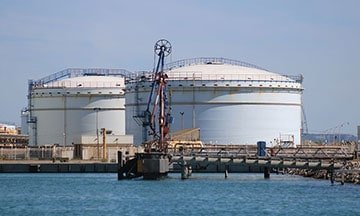Seismic Interpretation & Basin Analysis, Principles and Applications in Rift Basin
| Date | Venue | Duration | Fees | |
|---|---|---|---|---|
| 27 May - 31 May, 2024 | Dubai | 5 Days | $4750 | Register |
| 10 Jun - 14 Jun, 2024 | Dubai | 5 Days | $4750 | Register |
| 08 Jul - 12 Jul, 2024 | Dubai | 5 Days | $4750 | Register |
| 29 Jul - 02 Aug, 2024 | Lagos | 5 Days | $4950 | Register |
| 19 Aug - 23 Aug, 2024 | Dubai | 5 Days | $4750 | Register |
| 16 Sep - 20 Sep, 2024 | Dubai | 5 Days | $4750 | Register |
| 07 Oct - 18 Oct, 2024 | Johannesburg | 10 Days | $9150 | Register |
| 07 Oct - 11 Oct, 2024 | Dubai | 5 Days | $4750 | Register |
| 25 Nov - 29 Nov, 2024 | Dubai | 5 Days | $4750 | Register |
| 02 Dec - 06 Dec, 2024 | Dubai | 5 Days | $4750 | Register |
Course Overview
This Zoe course is designed to provide participants with a comprehensive understanding of the fundamental principles of seismic interpretations. The course will cover geological information, magnetics and gravity information, well data, development of synthetic seismogram, and its utilisation in various interpretations. Participants will also learn the basics of basin formation processes and evaluation, source rocks, sedentary basin models migration, geodynamic models, and basin maturation. Finally, the course will offer detailed insights into applying these principles and techniques in the rift basin system. Detailed explanations of mapping and picking horizons will be provided alongside the latest seismic 2D, and 3D data interpretation technologies utilised offshore and onshore. The course will be a refresher and update for development and exploration geologists, sedimentologists, seismic interpreters, and other professionals interested in using geological and seismic data for rift basin analysis.
What are the Common Techniques for Quantitative Seismic Interpretations?
Seismic interpretations involve tracking and selecting consistent seismic reflectors to map geologic structures, reservoir architecture, and stratigraphy. The prime purpose is the detection of hydrocarbon accumulations, calculate their volumes and determine their extents. Conventional seismic interpretations require experience and skill in geophysics and geology. The standard techniques used by most seismic interpreters for seismic interpretations include offset-based amplitude analysis, also known as AVO analysis, forward seismic modelling, elastic impedance inversion, and post-stack amplitude analysis. The techniques validate and confirm hydrocarbon anomalies while providing additional data during reservoir characterisation and prospect evaluation.
What are the Types of Basins?
A basin is a dip or depression in the earth’s surface. They are typically shaped like bowls, with higher sides than the bottom. They can also be circular or oval, like a tub or sink found in bathrooms. Basins are created by forces above the ground like erosion or forces below like earthquakes. While some are filled with water, others are empty. There are three main types of basins; river drainage basins, ocean basins, and structural basins. River drainage basins are areas drained by a river and its tributaries. River drainage basins comprise different watersheds that make up a river’s drainage system. Ocean basins are the biggest depressions on the earth’s surface. There are five main types of ocean basins; the Atlantic Basin, the Pacific Basin, the Arctic Basin, the Southern basin, and the Indian basin. The structural basins are created during the movement of tectonic plates, also known as the earth’s crust. Tectonic activities are responsible for natural phenomena such as volcanoes and earthquakes.
Course Objectives
The Seismic Interpretation and Basin Analysis, Principles and Applications in Rift Basin training course is designed to help participants attain the following objectives:
- Understand how to systematically assess the development of a basin’s convention and non-conventional petroleum systems by applying practical principles of geophysics, geochemistry, and geology
- Evaluate the fundamentals of geomechanics that control a basin’s burial history using the tectonics subsidence analysis method
- Determine a basin’s thermal history and its value on source maturity dynamics
- Identify and interpret the major structural features and characteristics of rift basins
- Understand the seismic processes, develop geologic models, create maps and interpret seismic sections
- Learn how to connect subsurface stratigraphy with well data
- Create and design a stratigraphic framework through seismic stratigraphy
- Develop and analyse petroleum event charts
- Learn how to generate fault deliverables and horizons for geomode
- Understand how to design and analyse a decision tree using economic and geologic risk factors
- Recognise how to characterise and classify carbonates, clastic and unconventional reservoir properties
- Determine the optimal spatial and stratigraphic locations within a basin for exploring conventional and unconventional mineral resources
- Recognise earth processes that form rift basins
- Gain practical insights on 2D and 3D seismic interpretations and their purpose in the Oil and Gas industry
Training Methodology
Training offered at Zoe Talent Solutions is participant-based and is specially organised to meet participants’ expectations and improve their skills and knowledge. Different effective practical approaches and methodologies to ensure active and constant participant learning are utilised to present the course. The course will be taught by experts within the field who have gathered various practices and experiences. The program’s contents and outline are subject to scrutiny and thorough evaluation before the commencement of each training session.
The Zoe training course on Seismic Interpretation and Basin Analysis, Principles, and Applications in Rift Basins include theoretical and practical learning through an active learning process involving role-plays, case studies, experiential learning, and audio-visual presentations to enable easy understanding of the materials while providing practical contexts. This system of training was developed by Zoe Talent Solutions and is called the Do-Review-Learn-Apply Model.
Organisation Benefits
Organisations that invest in this Zoe training course for their staff stand to benefit in the following ways:
- Prediction of play trends for the latest acreage acquisition
- Getting the most out of their expensively acquired well and seismic data
- A more accurate assessment of their geological risk prospects
- Development of employees with the latest oil discovery skills that they can apply to ongoing exploration projects instantly
- A more accurate estimation of Expected Monetary Value (EMV) for prospect economic assessments
- Recognition of new leads, new plays, and prospects
Personal Benefits
Experts undertaking this training will enjoy the following benefits:
- Gain the ability to determine the presence and distribution of clastic reservoirs and how to recognise new leads, prospects, and plays
- Develop valuable skills on how to assess the presence and effectiveness of hydrocarbon source rocks and their connection to reservoirs
- Understand the major types of hydrocarbon traps developed in rift basins and where to discover them
- Gain enhanced oil finding skills that, in turn, develop the better company and professional recognition
- Have improved abilities in geological risk assessments for prospects and leads in rift basins
- Recognition of vital stratigraphical and structural geometrics within rift basins and how to recognise them in seismic
Who Should Attend?
This training course is curated for various professionals and experts who analyse and interpret different geological processes. The following persons should attend the class:
- Exploration geologists charged with using data and investigative methods to determine where mineral deposits, water, gas, oil, and other natural resources are located underneath the earth’s surface
- Drilling engineers tasked with planning, developing, and supervising operations used in drilling gas and oil wells
- Reservoir engineers responsible for optimising oil and gas productions through accurate well placements, enhanced recovery techniques, and production levels. They also identify risks and develop forecasts on a reservoir’s potential
- Oil and gas regulatory inspectors charged with supervising conventional and non-conventional drill locations and storage equipment to ensure compliance with necessary safety guidelines
- Mudloggers employed by oil and gas companies to oversee drilling operations, analyse geological samples, prevent harmful on-site situations, supervise on-site maintenance, and implement safety protocols
- Oil and gas accountants responsible for preparing and booking an oil and gas company’s bank deposits and transfers, reconciling different ledger accounts, preparing annual depletion and depreciation tax schedules, and preparing quarterly and yearly financial reports
- Carbon and sustainability managers tasked with supervising a company’s sustainability strategies during various on-site processes
- Oil and gas attorneys responsible for providing guidance and direction on legal issues bothering all areas of oil and gas production
- Seismic interpreters tasked with assessing the quantity of mineral deposits present in rock structures, the various extraction methods, and the likelihood of hazards during such a process
- Sedimentologists engaged in the study of the textures, constituents, structures, and fossil components of sand, soil, and sediments of various geographical locations
- Petrographers tasked with reviewing historical and environmental data for publication accuracy. They also estimate likely areas of natural gas, oil, and mineral deposits
- Every other person interested in various geological processes
Course Outline
The course covers the following topics:
Module 1: Introduction to Seismic Interpretation
- History of seismic studies
- Principles of seismic interpretation
- Seismic and geophysical methods
- Gravimetry
- Magnetics
- Electromagnetic, seismic response
- Wave propagations, reflection, refraction, and reflectivity of seismic waves
- Data acquisition
- Rock properties
- Seismic data processing
- Velocity models
- Resolution
- Horizontal and horizon slices
- Application of seismic attributes
- Principles of structural & stratigraphic interpretation
Module 2: The Fundamentals of Rift Basins
- Introduction
- Types of basins
- Typical features of rift basins
- Outcrop geology and the study and analysis of rift basins
- Earth processes that create rift basins
- Superposition and multiple rifting phases
- Present-day rift basin developments
- Basin formation mechanisms
- Rift basins structural analysis and classification
Module 3: Structural and Stratigraphic Interpretations
- Fault interpretation
- Correlation and mapping exercise with 3D seismic grid
- Bright spot interpretation
- Seismic-well tie
- Map generation
- Quantified interpretation
- Horizon interpretation
- Seismic attribute and amplitude analysis
- Velocity and depth conversion
- Application of sequence stratigraphy concepts
- Reconnaissance of depositional patterns
- Thin-skin vs thick-skin models
- Play and prospect analysis
Module 4: Tectonic Evolution and Structural Settings of Rift Basins
- Identification of major features of rift basins on seismic
- Hanging wall processes
- Fault styles in rift basins and major hydrocarbon trap types
- Complex and transtensional overprint basin development
- Crustal stretching models, development of rift basins, and extension
- Footwall uplift and related processes
- Basin formation processes
- Source rocks
- Types of basin analysis models
- Geodynamic models
- Sedentary basin models
- Mathematical basin analysis models
- Stratigraphical basin analysis models
- Basin analysis case studies
Module 5: Seismic Applications in Oil Exploration and Production Processes
- Regional scale
- Global basin geometry
- Location
- Definition of migration pathways
- Shape and burial of source rocks
- presence and geometry of seals and reservoir
- Block Scale
- Direct Hydrocarbon Indicators (DHIs)
- Accidents and unconformities
- Location and shape reservoirs
- Quality of stratigraphy
- Prospect scale
- Local stratigraphical variations
- Well definitions
- Risk evaluations and volumetrics
- DHI’s fine tuning
- Appraisal
- Definition of “sweet spots”
- Delineation of accumulation
- Development
- Geosteering
- Monitoring (4D)
Module 6: Development of Petroleum Systems within Rift Basins
- Migration of hydrocarbons in rift basins
- Hydrocarbon source rock expansion and distribution in rift basins
- Seal presence and hydrocarbon seal integrity
- Reservoir presence and growth in rift basins
- Use and application of basin modelling in rift basins
- Seismic attributes and exploration of rift basins and the pitfalls
- Stratigraphical, structural, and combinational traps where to go searching for oil in rift basins
Module 7: 2D and 3D Interpretation Techniques
- Vertical exaggeration
- Hard and soft events
- Seismic horizons: fluid contacts, non-geological horizons, and stratal interface
- RMS amplitude
- AVO and pseudo-gradient
- Quantitative interpretation geophysics
- Acoustic impedance and inversion
- Spectral decomposition
Module 8: Identification of Rift Phases and the Stratigraphy of Basins
- Pre-rift, syn-rift, and post-rift evolution and identification
- Controls of rift basin stratigraphy
- Seismic facies and sedimentary systems & methods in rift basins
- Integrated well log data and identification of rift phases
- Sequence stratigraphy and seismic sequence stratigraphy within rift basins
- Applied biostratigraphy in rift systems for correlations, paleoenvironmental interpretations, and age dating.
Module 9: Risks and Decision Making
- Basic concepts
- Game theory and decision trees
- Quantitative deterministic
- Petroleum reserve definitions
- Quantitative stochastic monte carlo
- Stochastic-deterministic definitions











